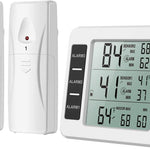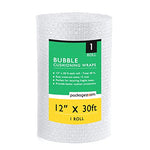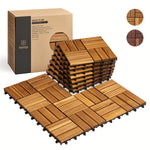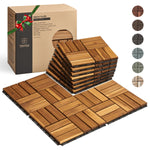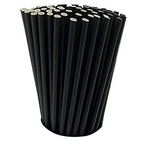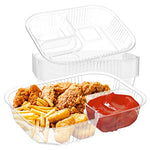You have no items in your shopping cart.
Cockroach infestations can be a nightmare, especially in food-related establishments, posing serious health risks and damaging reputations. As a food worker, recognizing the early signs of a cockroach infestation is crucial for maintaining hygiene standards and preventing contamination. In this in-depth article, we'll explore the various signs that food workers might notice when dealing with a cockroach infestation. From physical evidence to peculiar behaviors, we'll cover it all to help you identify and address these unwanted visitors effectively.
1. Understanding the Importance of Early Detection
Detecting cockroach infestations early on is key to preventing widespread contamination and potential health hazards. Learn why vigilance matters.
2. What Sign of Cockroach Infestation Might Food Workers Notice?
Food workers must be aware of the specific signs indicating the presence of cockroaches in their establishments. Let's delve into these crucial signs.
Cockroaches can leave behind various physical signs that point to their presence. These signs include:
-
2.1 Droppings: Identifying Cockroach Excrement Cockroach droppings resemble small black or brown pellets, often found in dark corners or near food sources.
-
2.2 Shed Skins: Discarded Exoskeletons Cockroaches molt as they grow, leaving behind their old exoskeletons, which can be found near infestation areas.
-
2.3 Egg Casings: Evidence of Reproduction Cockroach egg casings, also called oothecae, are brown, purse-shaped capsules that may contain multiple eggs. These are usually discovered in hidden spaces.
-
2.4 Foul Odor: Recognizing the Cockroach Smell Cockroaches emit a distinct, musty odor that intensifies with the size of the infestation. Workers may notice this unpleasant smell in infested areas.
-
2.5 Grease Marks: Tracing Roach Pathways Roaches leave behind grease and dirt marks on surfaces they frequent, making these trails useful for identifying their movement.
3. Signs of Cockroach Activity in Specific Areas
Different parts of a food establishment might show unique signs of cockroach activity. Here's what to look for in each area:
-
3.1 Kitchen and Food Preparation Areas The heart of any food establishment, the kitchen, is a common target for cockroach infestations. Signs here include:
- Finding droppings or egg casings near cooking equipment and food storage areas.
- Greasy tracks along walls and floors.
-
3.2 Dining Areas Cockroaches are nocturnal and usually hide during the day. Signs in dining areas may include:
- Spotting cockroaches scurrying across the floor at night.
- Noticing chew marks on paper, cardboard, or food containers.
-
3.3 Storage and Pantry Areas Infestations often begin in storage spaces. Watch out for:
- Damaged packaging with gnaw marks.
- Droppings near stored food items.
4. Unusual Cockroach Behavior
Understanding their behavior can aid in early detection. Watch for these unusual signs:
-
4.1 Daytime Activity Cockroaches are primarily nocturnal, so seeing them during the day indicates a substantial infestation.
-
4.2 Flight Attempts While most cockroaches don't fly, they may attempt to if the population is high or they feel threatened.
-
4.3 Aggression Towards Each Other In overcrowded areas, cockroaches may turn aggressive and start fighting.
5. Identifying Cockroach Species
Different cockroach species have distinct appearances and behaviors. Familiarize yourself with the common ones:
-
5.1 German Cockroach (Blattella germanica) The German cockroach is a small, light-brown species commonly found in kitchens and bathrooms. Signs of their presence include a strong musty odor and sightings near water sources.
-
5.2 American Cockroach (Periplaneta americana) Larger than German cockroaches, American cockroaches are reddish-brown and often found in sewers and basements. Signs include dark droppings and the presence of egg cases.
6. Common Entry Points for Cockroaches
Knowing where cockroaches enter can help you block their access:
-
6.1 Cracks and Crevices Small gaps in walls, floors, and pipes provide easy entry points for roaches.
-
6.2 Vents and Drains Cockroaches can crawl through vents and drains, especially in larger establishments.
-
6.3 Deliveries and Packages Cockroaches can hitchhike on deliveries, so inspect incoming packages.
7. The Dangers of Cockroach Infestations in Food Establishments
Understanding the potential risks and consequences of infestations will underscore the importance of proactive measures.
8. Preventive Measures for Food Establishments
Take action to prevent infestations in your establishment with these strategies:
-
8.1 Regular Inspections and Maintenance Implement routine inspections and maintenance to catch infestations early.
-
8.2 Proper Food Storage Store food in airtight containers to deny roaches easy access.
-
8.3 Cleaning and Sanitation Maintain impeccable cleanliness and sanitation to remove potential food sources.
9. How to Deal With a Cockroach Infestation
If you spot signs of an infestation, follow these steps to address the issue promptly:
-
9.1 Consult Professional Pest Control Reach out to experienced pest control services to assess and eliminate the infestation.
-
9.2 Targeted Treatments Use targeted baits and pesticides for efficient and safe eradication.
-
9.3 Regular Monitoring Continue monitoring to ensure the infestation does not return.
FAQs (Frequently Asked Questions):
Here are some common questions food workers might have about cockroach infestations:
-
Q: Can cockroaches transmit diseases to humans? A: Yes, cockroaches can carry pathogens that may cause diseases like salmonellosis and gastroenteritis.
-
Q: How quickly can cockroach populations grow? A: Cockroaches can reproduce rapidly, with some species producing as many as 300-400 offspring in their lifetime.
-
Q: Are DIY cockroach treatments effective? A: DIY treatments can provide temporary relief, but professional pest control is often more effective for long-term solutions.
-
Q: How can I prevent cockroaches in my restaurant kitchen? A: Maintain cleanliness, seal entry points, and address any signs of infestation immediately.
-
Q: Are cockroaches only attracted to dirty establishments? A: Even clean establishments can attract cockroaches if they offer food and shelter.
-
Q: Can cockroaches develop resistance to pesticides? A: Yes, over time, cockroaches can develop resistance to certain pesticides, highlighting the need for professional pest control.
As a food worker, being vigilant about cockroach infestations is essential to ensure the safety and reputation of your establishment. By familiarizing yourself with the signs, preventive measures, and appropriate actions, you can swiftly tackle any roach-related challenges that may arise. Remember, early detection and proactive steps are your best defense against these unwanted guests.


